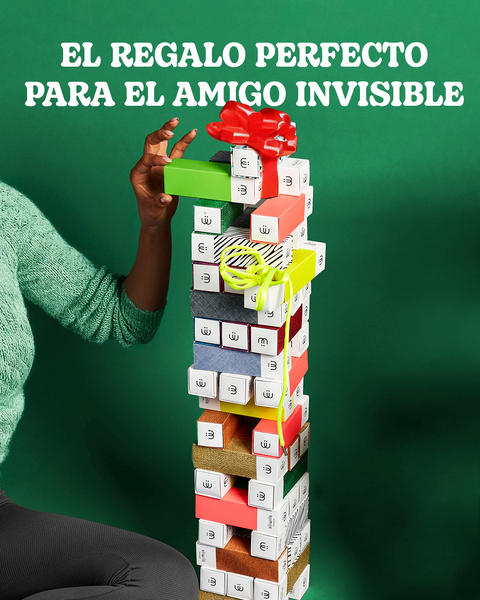
The 10 strangest names for the most normal things
If memory serves, in some other post on our blog we already mentioned that, for better or worse, Spanish, or Castilian, or Cervantes language, is a very rich language .
In fact, it is so copious that it includes names so strange that only three types of people are known: academics, Coca-Cola and crochet geeks, or those who are bored at work and decide to ask Google any question.
Yes, indeed, since watching Twitch was too boring and we had to pretend that we were doing something productive, we looked for “strange names” to write this post and, in the process, kill time until 6:00 p.m.
No, we were not referring to proper names like that of your aunt Edugria or that of your grandfather Panasicleto, both beautiful. Rather, we were thinking about the very strange names that some common things have , things that surround us every day and that we have no choice but to name using wildcard words like “thing”, “thing”, “gossip” or “sheath” , or constructions such as “lo del”, “lo que hay en” or “el dese de” , with their respective variants of gender and number.
The truth is that the list that San Google has given us is full of linguistic pearls. So, put down the Coca-Cola and the hooks for a second, here goes the one from our own harvest.
1. Giste
We start our particular list of rare names with “giste”, a word of German origin, Gischt . Giste is the finolis name for beer foam , how does it feel on your body?
It is not surprising that it comes from German, as does a word that also belongs to the field of drinking: “toast”, from bring dir’s . But let's get the image of Germans raising their arms out of our minds, please.

2. Agraph
If you're into uncorking bottles, you've come across one of these damn ones. The agrafe is that piece of very thin metal that is used to hold the cork and make you lose a few valuable seconds of your only life while you remove it. The same thing happens as with the plastic wrap on sliced bread, only we never lose the clip: it goes straight into the trash.
3. Stepicursor
Known among laymen (us included) as the “Western movie bush,” it is the Western movie bush , which always starts filming in the middle of the frame and screws up the director's shot.
The steppicursor is a tumbleweed that, when mature, breaks off from the root and goes off to live its life. Like the young man who becomes independent in Spain, only before the age of 40.

4. Lunula
Although we liked it as a name for a dog we adopted, it refers to the crescent-shaped space at the base of the nail , an impregnable area sheltered from the most insistent and powerful human bites.
By the way, the habit of biting your nails and swallowing them does not cause appendicitis, as some believe. But, just in case, and since you're going to make a mess, it's better to eat the snot, which is more digestive.
5. Phosphene
Phosphene is that kind of white or red luminous spots that you see when you squeeze your eyes very close . They appear when the eyeball is subjected to extreme pressure. Perhaps you have “perceived” the phosphene in the bathroom, when, this time when it opens, the pressure in another eye is also extreme.

6. Petrichor
Petrichor is what every neighbor's child calls the “smell of rain,” that whiff that rises in the air when it is beginning to sparkle. Apparently, the whiff is produced when soil bacteria release their spores with the first drops of water.
Come on, petrichor is like the flatulence of a handful of soaked bacteria. Disgust? Then look for “coffee monkey” and “beaver vanilla”, you'll see what real disgust is.

7. Jeme
It sounds a little like “moaning”, but it has nothing to do with it. The jeme is the distance between the thumb and index finger , separating them as far as possible. There are those who say that those centimeters are the same as that of a certain male organ... Hey, in the end maybe it does have to do with the first thing.

8. Virgulilla
This is perhaps the best known of this list of strange names for everyday things. The virgulilla is the “little stick” of the Ñ , a more Spanish letter than the potato omelette or taking companies to Andorra. The origin of this orthographic sign was a double N of Latin words that, over time, was simplified. For example, “annus” = “year”.
The truth is, the only thing we would send to Andorra is those who make potato omelettes without onions, a gang of Judases. And, if there is room, also those who eat pizza with pineapple.

9. Bleeding
Come on, this is easier than the tilde. It has to do, of course, with blood. Specifically, it is the part of the arm opposite the elbow , the place where ancient doctors (crooks, rather) bled patients to get rid of their “bad mood,” which was what they called an ailment when they had no idea what it was. what it was.
Logic says that it would be the other way around: when you get upset is precisely when they bleed you alive for no reason. Or have you seen someone leave a bank clapping?
(By the way, why do older people always have the habit of holding the elbow?)
10. Herrete
Ha, we did know this one! Devoting ourselves to designing and selling shoelaces , how could we not know what a shoelace is.
The aglet is the... thing about the laces, the thread that is put on the tips to pass them through the fingers, the... holes... eyelets, that didn't come out! (It's almost six o'clock and our neurons are already asking for the first beer, with its good taste).
Okay, so before you go looking for “coffee monkey” and “beaver vanilla,” you have to do something much more important than finding out what comes out of an animal's butt. And it is to answer the following question: if you change your clothes every day (except for one day in winter), why do you always wear the same shoelaces?
Yes, changing your laces is one of the laziest things to do , but that's because we only change them when they break , when there is a need.
Doing something out of necessity is difficult because we do it unwillingly, it's our turn to be flat. It's like work: we would be here if it weren't for this strange habit we have of eating three times a day. But, if we do something for pleasure, things change. There we do spend what is not written and “let's live, it's two days” or “let them take away what we danced”, eh?
And how to make changing your laces effortless ? Well, stop seeing them as gossip that only serves to lace up your sneakers and run. Some prints, some brilli-brilli colors, a touch that turns simple laces into the coolest fashion accessories .

If you have thought about your style a lot and can't find it, click on the link and give it the last try with the Sliwils laces!
PS: Before we go shopping, we tell you that they all have the same price and free shipping within Spain . For those who eat the potato omelet without onion, we do charge shipping.



Comments (1)
Naaa, se cambian cada que los lavas.
;3